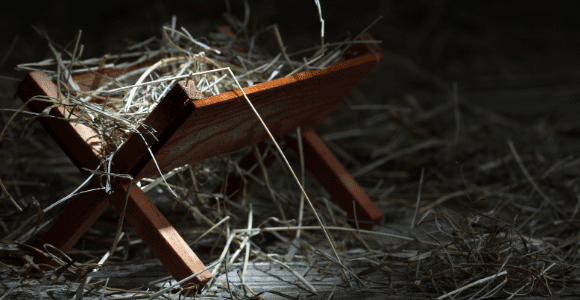Welcome readers! Please subscribe through the buttons on the right if you enjoy this post.
(Read this series from its beginning here.)

In Luke’s birth narrative, we read:
“This will be a sign to you: You will find a baby wrapped in cloths and lying in a manger.” (Luke 2:12)
This Christmas, many are enduring hardship because the political elite have mishandled the COVID-19 pandemic. The economic recovery some have touted is a “K” shaped recovery: the wealthy have gotten even wealthier whereas both the working class and those who live below the poverty line have seen their lives get worse.
In this context, Mary’s Magnificat in Luke’s birth narratives gives me much to ponder: “He has brought down rulers from their thrones but has lifted up the humble. He has filled the hungry with good things, but has sent the rich away empty.”
As we said in part 2, these narratives in Matthew and Luke are not filled with the theme of another world or an afterlife. Instead, they present another iteration of this world. They are concerned with the concrete experience of those being exploited and fighting for their economic survival in this life, here and now. They are not about salvation as individual or spiritual but as concrete liberation from the social, political, and economic realities that seek to crush the people.
Luke’s entire gospel repeatedly contrasts the common people or peasantry with the ruling elite in the society of Luke’s intended audience (cf. Luke 6:20-26; Luke 4:18-19). Our communities today are divided along social, political, and economic lines too. During this pandemic, many of the haves have gained even more while the little bit that those without had, has either been taken away or been barely enough. What do these stories say for our lives, today? Can they still speak to us of another kind of world, possible here and now?
In Matthew, the Magi are key characters. Luke gives us the shepherds (see Luke 2:8). Interpreting these shepherds in Luke’s story, Horsley writes in The Liberation of Christmas: The Infancy Narratives in Social Context: “The shepherds of Luke 2 should not be over-interpreted, whether in the older fashion as symbols of some idyllic pastoral life or in the more recent mode as representatives of the despised and ostracized in Jewish society. Shepherds were simply part of the peasantry in ancient Palestinian society. Peasants, almost by definition, were poor, and dwellers were lowly in status. Shepherds while not despised by the people, were apparently some of the lowliest of the lowly.” (p.106)
Luke’s birth narratives are centered in the social location of the common people rather than that of the elite of the day. Even John the Baptist’s parents are common priests living in Judea and associated with the common people, not high-priests connected to other rulers in Jerusalem. Luke’s birth narrative places Jesus among and in solidarity with the hopes of the common peasantry of that time.
This association of Jesus with the hopes of those scratching and clawing for their survival helps us better understand the focus of three poems included in Luke: The Magnificat (Mary, Luke 1:46-55), the Benedictus (Zechariah, Luke 1:68-79), and the Nunc Dimittis (Simeon, Luke 2:29-32).
Let’s take a very brief look at each.













